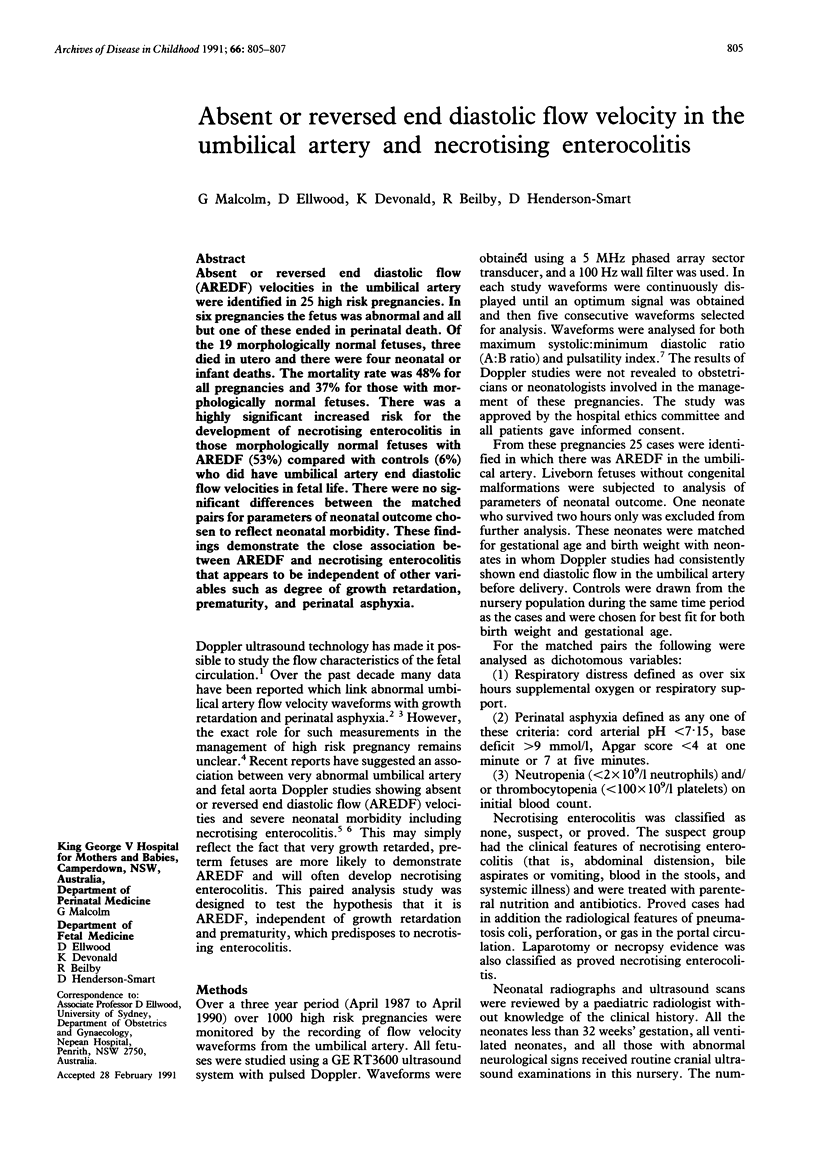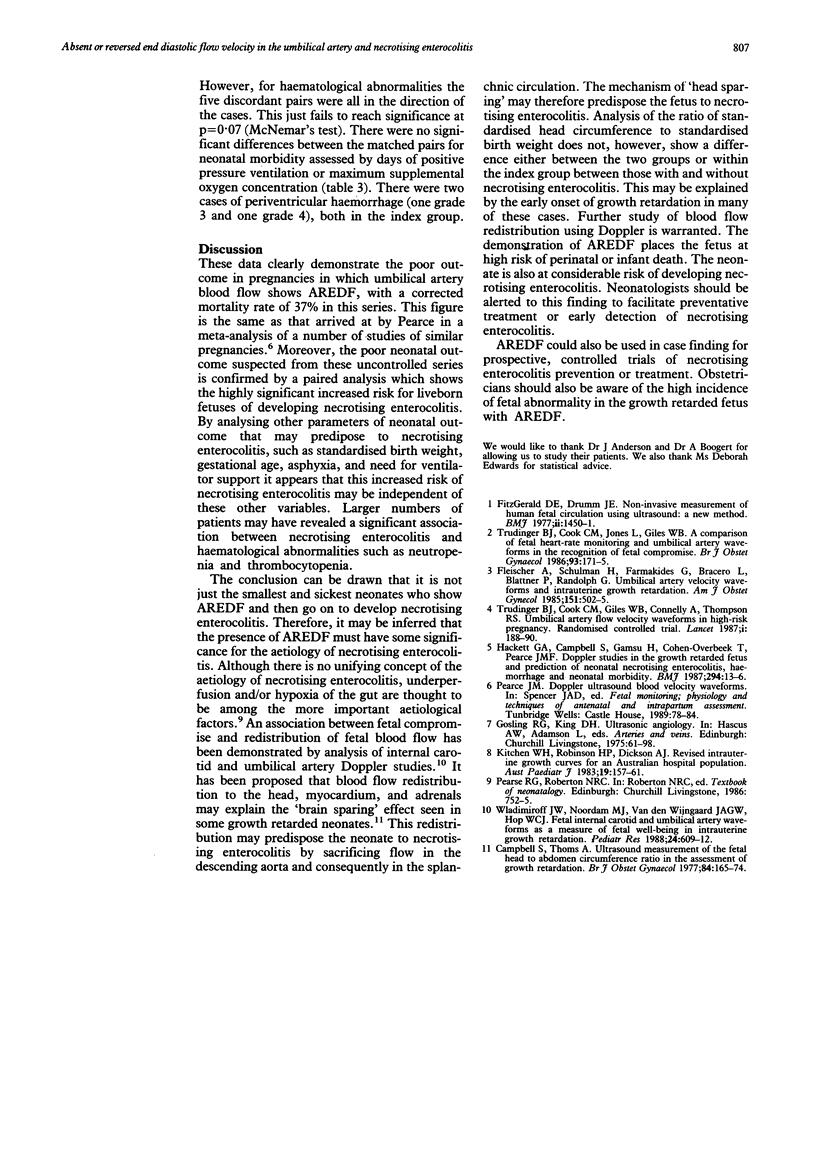Abstract
Absent or reversed end diastolic flow (AREDF) velocities in the umbilical artery were identified in 25 high risk pregnancies. In six pregnancies the fetus was abnormal and all but one of these ended in perinatal death. Of the 19 morphologically normal fetuses, three died in utero and there were four neonatal or infant deaths. The mortality rate was 48% for all pregnancies and 37% for those with morphologically normal fetuses. There was a highly significant increased risk for the development of necrotising enterocolitis in these morphologically normal fetuses with AREDF (53%) compared with controls (6%) who did have umbilical artery end diastolic flow velocities in fetal life. There were no significant differences between the matched pairs for parameters of neonatal outcome chosen to reflect neonatal morbidity. These findings demonstrate the close association between AREDF and necrotising enterocolitis that appears to be independent of other variables such as degree of growth retardation, prematurity, and perinatal asphyxia.
Full text
PDF


Selected References
These references are in PubMed. This may not be the complete list of references from this article.
- Campbell S., Thoms A. Ultrasound measurement of the fetal head to abdomen circumference ratio in the assessment of growth retardation. Br J Obstet Gynaecol. 1977 Mar;84(3):165–174. doi: 10.1111/j.1471-0528.1977.tb12550.x. [DOI] [PubMed] [Google Scholar]
- FitzGerald D. E., Drumm J. E. Non-invasive measurement of human fetal circulation using ultrasound: a new method. Br Med J. 1977 Dec 3;2(6100):1450–1451. doi: 10.1136/bmj.2.6100.1450. [DOI] [PMC free article] [PubMed] [Google Scholar]
- Fleischer A., Schulman H., Farmakides G., Bracero L., Blattner P., Randolph G. Umbilical artery velocity waveforms and intrauterine growth retardation. Am J Obstet Gynecol. 1985 Feb 15;151(4):502–505. doi: 10.1016/0002-9378(85)90278-9. [DOI] [PubMed] [Google Scholar]
- Hackett G. A., Campbell S., Gamsu H., Cohen-Overbeek T., Pearce J. M. Doppler studies in the growth retarded fetus and prediction of neonatal necrotising enterocolitis, haemorrhage, and neonatal morbidity. Br Med J (Clin Res Ed) 1987 Jan 3;294(6563):13–16. doi: 10.1136/bmj.294.6563.13. [DOI] [PMC free article] [PubMed] [Google Scholar]
- Kitchen W. H., Robinson H. P., Dickinson A. J. Revised intrauterine growth curves for an Australian hospital population. Aust Paediatr J. 1983 Sep;19(3):157–161. doi: 10.1111/j.1440-1754.1983.tb02082.x. [DOI] [PubMed] [Google Scholar]
- Trudinger B. J., Cook C. M., Giles W. B., Connelly A., Thompson R. S. Umbilical artery flow velocity waveforms in high-risk pregnancy. Randomised controlled trial. Lancet. 1987 Jan 24;1(8526):188–190. doi: 10.1016/s0140-6736(87)90003-1. [DOI] [PubMed] [Google Scholar]
- Trudinger B. J., Cook C. M., Jones L., Giles W. B. A comparison of fetal heart rate monitoring and umbilical artery waveforms in the recognition of fetal compromise. Br J Obstet Gynaecol. 1986 Feb;93(2):171–175. doi: 10.1111/j.1471-0528.1986.tb07882.x. [DOI] [PubMed] [Google Scholar]
- Wladimiroff J. W., Noordam M. J., van den Wijngaard J. A., Hop W. C. Fetal internal carotid and umbilical artery blood flow velocity waveforms as a measure of fetal well-being in intrauterine growth retardation. Pediatr Res. 1988 Nov;24(5):609–612. doi: 10.1203/00006450-198811000-00014. [DOI] [PubMed] [Google Scholar]


